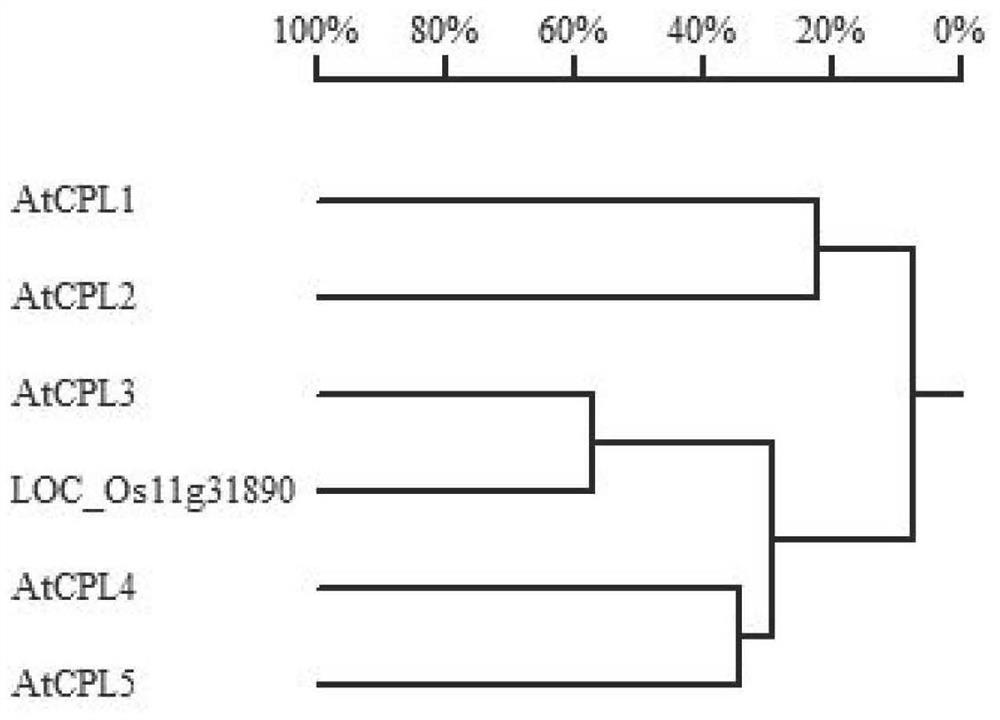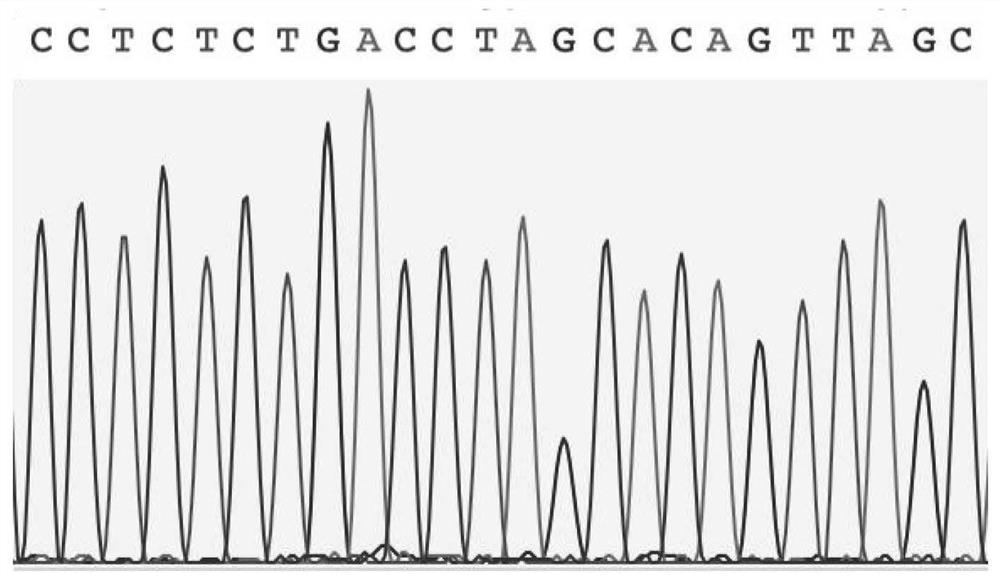Rice OsSDY1 gene, biological material, method, expression vector transformation host and application of rice OsSDY1 gene in stress resistance and yield stabilization
A biomaterial and rice technology, applied in the field of plant genetic engineering, can solve the problems of reducing yield, restricting plant growth and development, and changing water efficiency of stomatal plants to stress and resistance.
- Summary
- Abstract
- Description
- Claims
- Application Information
AI Technical Summary
Problems solved by technology
Method used
Image
Examples
Embodiment 1
[0030] Example 1 Cloning of rice OsSDY1 gene
[0031] 1. Obtaining the genome sequence of the rice OsSDY1 gene
[0032] The leaf DNA of the rice variety Zhonghua 11 (ZH11) was extracted, and the DNA was used as a template to use the forward primer OsSDY1-F (sequence shown in SEQ ID NO. 5) and reverse primer OsSDY1-R (sequence shown in SEQ ID NO. 6), PCR amplification was performed with KOD PlusNeo (Code: KOD-401, TOYOBO) to obtain the amplification product, that is, SEQ ID NO. 1 in the sequence table, OsSDY1 gene sequence.
[0033] 2. Obtaining the coding sequence of rice OsSDY1 gene
[0034] Extraction of total RNA from leaves of rice cultivar ZH11 using PrimeScript TM RT reagent Kit with gDNAEraser (Perfect Real Time) (Code: RR047A, Takara) to synthesize cDNA, use this cDNA as a template, use forward primer OsSDY1-CDS-F (sequence shown in SEQ ID NO.7) and reverse primer OsSDY1-CDS-R (the sequence is shown in SEQ ID NO. 8) was amplified by PCR with KOD-Plus-Neo (Code: KOD-...
Embodiment 2
[0035] Example 2 Identification of rice CRISPR-Cas9 gene editing lines
[0036]Plants to be tested: recipient variety ZH11 and gene-edited OsSDY1 gene mutants.
[0037] Extract the leaf genomic DNA of the plant to be tested, take this DNA as a template, and use primers: OsSDY1-CPR-F (sequence as shown in SEQ ID NO.9) and OsSDY1-CPR-R (sequence as shown in SEQ ID NO.10) ) for PCR amplification, and the genomic DNA of the recipient variety ZH11 was used as a negative control.
[0038] The PCR amplification product was subjected to 1% agarose gel electrophoresis, the positive control showed a band of about 459 bp, and the negative control had no band. Sequence the lines with positive bands to analyze whether there are indels or substitutions at the editing site. Part of the sequencing results are as follows: figure 2 . The positive line was selected as Ossdy1-1.
Embodiment 3
[0039] Example 3 Identification of stomatal developmental phenotypes of transgenic lines
[0040] Plant to be tested: ZH11, a positive homozygous gene-edited plant Ossdy1-1.
[0041] 1. Each plant to be tested was cultivated in an incubator for about 25 days and then moved to a greenhouse for soil cultivation, with 4 plants per pot and 3 pots per line.
[0042] 2. After the rice plant is completely heading in step 1, cut the blade segment of about 4cm long at the wider middle of the flag leaf of the main panicle, and quickly put it into the standard fixative solution FAA (70% alcohol solution: formalin: glacial acetic acid) = 18: 1: 1) in the plastic bottle, the amount of fixative is about 30 times that of the leaves, to ensure that there is a certain gap between the leaves, and keep them airtight for more than 18 hours.
[0043] 3. Take out the fixed leaves in step 2, rinse with 70% alcohol for about 5 minutes, remove the fixative in the tissue, put it into a plastic bottle ...
PUM
 Login to View More
Login to View More Abstract
Description
Claims
Application Information
 Login to View More
Login to View More - R&D
- Intellectual Property
- Life Sciences
- Materials
- Tech Scout
- Unparalleled Data Quality
- Higher Quality Content
- 60% Fewer Hallucinations
Browse by: Latest US Patents, China's latest patents, Technical Efficacy Thesaurus, Application Domain, Technology Topic, Popular Technical Reports.
© 2025 PatSnap. All rights reserved.Legal|Privacy policy|Modern Slavery Act Transparency Statement|Sitemap|About US| Contact US: help@patsnap.com



